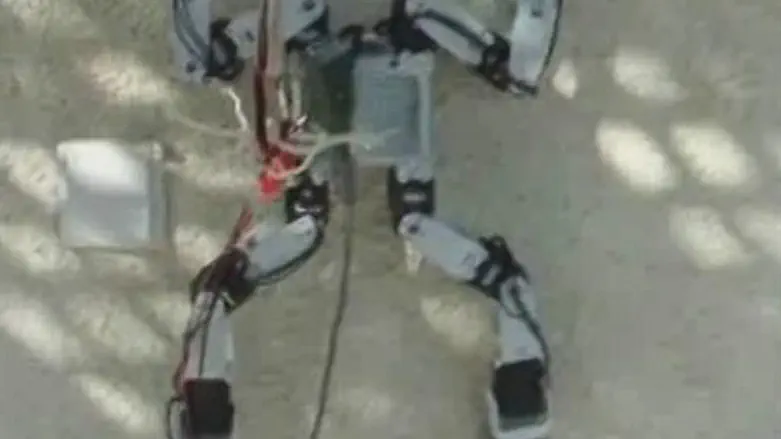
Visitors to the bi-annual Robotics Conference in Israel had a chance to meet Spiderman, at least in the form of a robot.
The Spiderbot, which was developed by a group of engineers at the Robotics laboratory at Ben Gusion University, was inspired by the legendary comic superhero. The robot can shoot cables with magnetic ends and walk on metal surfaces. In fact, researchers told National Geographic magazine last year that if developed properly, the Spiderbot could move cargo or conduct rescue operations.
Amir Shapiro, the director of the Robotics lab at Ben Gurion University’s Mechanical Engineering department, explained in an interview to National Geographic in October of last year what the robot could possibly do: “The application of Spiderbot can be for saving survivors in the middle of the ocean where you can imagine people in the middle of the sea and two boats on the sides and the robots are handling to the sides of the boats and holding the survivors and carrying them up to the boat. This is one application, another application is shooting arrows at buildings at the end of the streets and then moving along the street, on top of the street and having cameras and communication hardware.”
Shapiro usually models his robotic creations from animals such as snakes, snails, and even cats. His team recently created a snake-like robot by combining two concurrent wave motions to create a slithering movement.
He has worked with the IDF and crafted wall-climbing robots for intelligence gathering, including a robot that can scale concrete walls by releasing melted glue. In keeping with the animal motif, this robot was designed to act like a snail which leaves a trail of mucus behind. The walk and climb of a cat were his inspiration for a robot with four hooks whose four legs carry fishhooks.
Another one of Shapiro's creations is a robot with compliant magnetic wheels that can clamber on submerged hulls of cargo ships. Shapiro believes that this robot will one day be able to replace divers now check for contraband and bombs, and as he recently told Spectrum magazine: “A robot can do it safer, better, easier, and much less expensively. A good scanning algorithm can make it very efficient.”